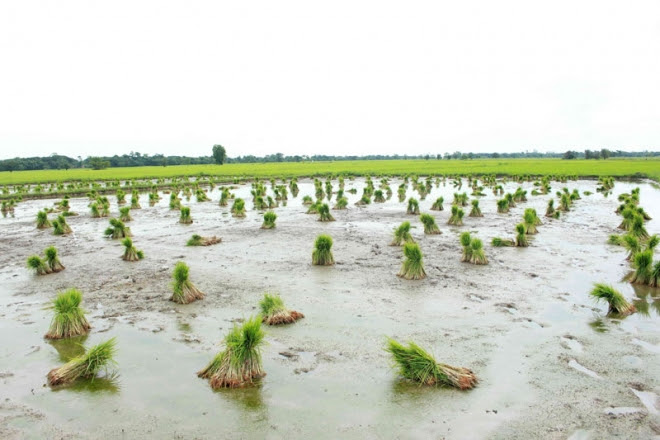A recent outbreak of Ufra rice disease is decimating rice crops in Ayeyarwady Region. Caused by a tiny nematode (Ditylenchus angustus) that feeds on the inner part of unmerged rice leaves, the disease initially causes the discoloration of rice plants. Infected plants have panicles with many unfilled grains, lowering yields, and in severe cases, causing complete crop failure.

In 2002, it was estimated that 15 percent of Myanmar’s rice farmers were affected by the disease, but because of improper containment strategies, the number is now thought to be higher. For example, in Ayeyarwady Region’s Myaungmya district, up to 68 percent of farmers are thought to be affected.
This year the monsoon has unleashed widespread infestation throughout Ayeyarwady Region, particularly in Pathein district. In many cases, farmers affected by the disease are only able to harvest up to 20 baskets of rice for each quarter acre, compared to an average of more than 70 baskets in a good year. At Hay Man Village in Bogele Township, 30 acres out of 55 acres were rendered unproductive by the disease.
The spread of the disease is blamed on inadequate understanding. Simple measures, such as burning crop residue, planting short-life rice varieties and proper water management, are enough to contain and, eventually, eradicate Ufra. Unfortunately, Myanmar farmers often lack enough knowledge about these measures. They also lack the tools needed to diagnose the disease from among a variety of pests and diseases likely to affect their crops. This means that they are trying to salvage their crops by using costly pesticides that are not as effective as the preventive measures outlined above.
The Myanmar Agriculture Service does what it can to assist but does not have the funds to make frequent village visits to help farmers diagnose and respond effectively to outbreaks of Ufra. Another challenge is that insufficient resources have been allocated to building the embankments, floodgates and other basic infrastructure that would significantly help farmers to control the disease. During a joint Proximity Design-MAS visit to Paw De Kaw Village in Naputa Township on 7th September 2014, it was revealed that more than 50 of the area’s farmers would be unable to implement the suggested prevention measures because their land was too close to a nearby river to allow for proper water management. In Paw De Kaw Township, floodgates are all that are needed to help control the spread of Ufra but the area’s farmers have suffered years of poor harvests and cannot afford to build them without government support.
Because the nematode responsible for Ufra needs high humidity, the disease thrives in South Asia, especially during years of heavy rain and flooding. Though cases of the disease have been documented in parts of India, Vietnam, Malaysia, Myanmar, and Thailand, it’s been most problematic in neighbouring Bangladesh. Even there, however, progress has been achieved by encouraging farmers to plant lowland rice varieties. Meanwhile, farmers in lower Myanmar, such as the residents of Paw De Kaw Village, continue to struggle.



